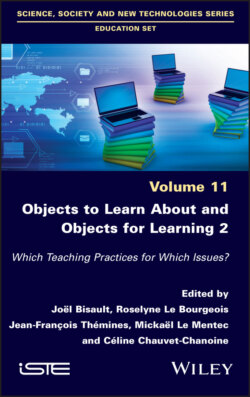Читать книгу Objects to Learn about and Objects for Learning 2 - Группа авторов - Страница 27
1.6. Conclusion
ОглавлениеThe aim of this study was to establish the spatial points of reference necessary for learning geography using manipulative techniques while only making the learning of these points of reference a part of this process and leaving room for the potential to analyze the discipline
The process seemed to be satisfactory, since the pupils played the game by spontaneously suggesting points of reference and by being responsive to relaunches and to the teacher’s redirection. The encounter between the design, production and manipulation of these points of reference made it possible to imbue them with an interesting operationality applied through a collective dimension associated with group learning and display.
Nevertheless, the results of the evaluation periods show that the object remains imperfect, precisely because its form, connected to a representation of space, which creates a variety of constraints that have been mentioned above (segmentation of shapes, superposition, juxtaposition, scale).
It is thus a tool to be perfected, certainly, but also a method that could constitute a foundation and a source of inspiration for teachers, particularly those in elementary school, for whom the subject is of particular interest. Reducing the time spent learning points of reference in geography in order to leave time for an analytic dimension of the discipline is a challenge; creating a list of spatial points of reference without having the list beforehand is another challenge. Whether pupils know how to find the United States using New York City as opposed to Washington DC is not an issue once they can correctly locate the country. If they find locations using monuments and animals rather than other classifiers, why not? They will have the time to refine their knowledge in middle school, high school and after school life.
Finally, it might be useful to dig deeper with regard to the layout of the classroom. In the framework of “learning the geography of spaces”, the fact of moving from wall maps that are infrequently or never looked at to removable, changing maps that the pupils can manipulate can contribute to the discovery of “the little-known morphology of situated objects, adjustable devices, and deployed networks, which is emerging and which demands to be inventoried” (Thémines and Le Guem 2020).
